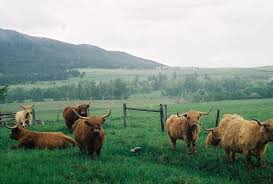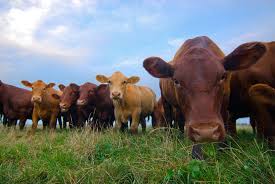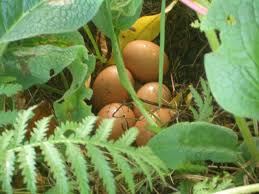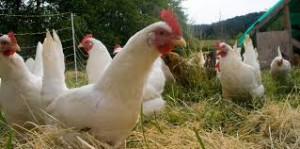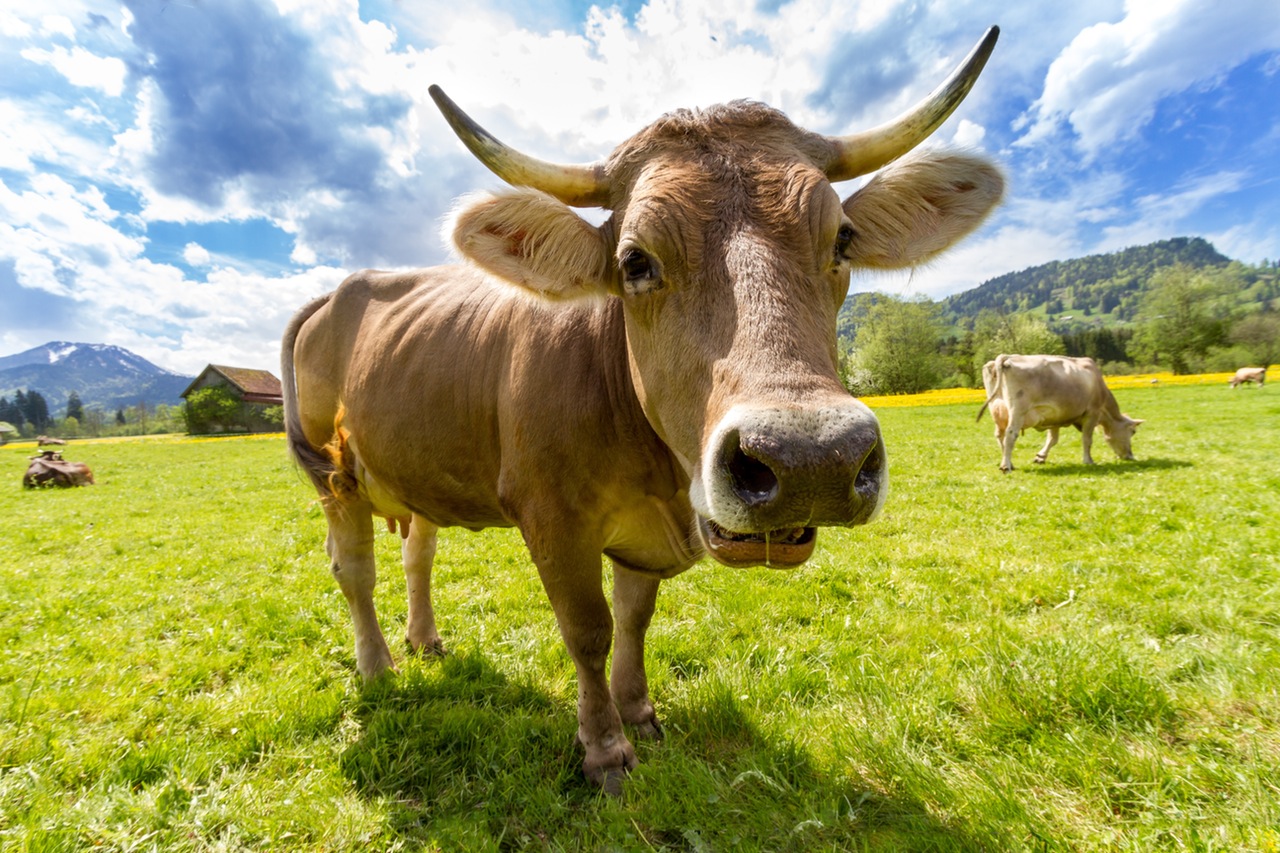In our last post, we said that we would discuss the different cuts of meat that come from a cow. Different cuts of meat are used differently. From stews to steaks and burgers, let us explore the cow and the different cuts of Beef. The way that a portion of the cow is cut, determines the best cooking practices. Dry rubs and simple seasoning (salt, pepper, and garlic) are some of our favorite ways to bring out juicy flavors in meat. When you have a great cut of beef, cooked properly, think “less is more” with seasoning.
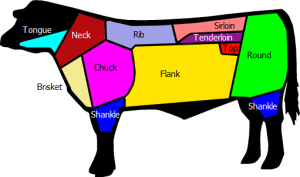
Chuck-Shoulder Petite Tenderloin, Shoulder Steak, Chuck Pot Roast, Blade Roast, Mock Tender Roast, Chuck Eye Roast, Chuck Top Blade Steak, Short Roast, Flanken Style Ribs, Arm Pot Roast. Chuck is a great less expensive, value cu,t that needs to cooked properly for tenderness. Chuck is also ground for ground beef. Stew, brisket, slow cooking methods, as well as tenderizing are important with Chuck.
Brisket– Brisket is a great cut to play with multiple recipes and way to cook it. We say throw on a delicous smoky rub and make you some barbeque.
Rib-Rib Roast, Prime Rib Steak, Ribeye Roast, Rib Eye Steak, Ribs (Back). Some of our favorites. For the Steaks get them with the bone in for a juicy steak. Simple Salat and Pepper along with a roasting or grilling style goes a long way with beef cuts from the rib section.
Sirloin/Loin/Top– T-bone Steak, Top Loin, Top Sirloin, Tenderloin, filet mignon, Tenderloin Roast, Porterhouse, Tri Tip Steak, Tri Tip Roast. The loin area of beef has some extremely buttery cuts great for grilling. Some of the tougher loin cuts can be used for slow cooking in stews or soups.
Round-Round Steak, Round Roast, Bottom Round Steak, Bottom Round Roast, Eye Round Roast, Top Round Steak, Rump Roast, Tip Steak, Tip Roast. These tend to be lean and tougher cuts. Slow Roasting, Braising, and Souping are the best ways to cook the meat to melt in your mouth.
Flank-Flank Steak, Skirt Steak. These cuts tend to be long and then. Marinating and grilling are great cooking options. Be sure to remove the membrane and cut against the grain of the meat for utmost tenderness and juiciness.
Shank– Beef Shank. Part of the leg of the cow and very tough. This cut must be slow cooked for hours with great flavors. You will enjoy delicious fall of the bone shanks.
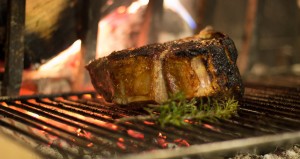 We decided to touch on the Paleolithic diet, being there is a big focus on the diet by many today. In our last post discussed the nutritional values of beef. The Paleo diet, centered around eating the food types first consumed by early humans, consists of meat, fish, fruits, vegetables, and healthy fats. Being that protein from animal is a big focus of the diet, we wanted to give you some insights on this style of eating, if you are not already familiar with it.
We decided to touch on the Paleolithic diet, being there is a big focus on the diet by many today. In our last post discussed the nutritional values of beef. The Paleo diet, centered around eating the food types first consumed by early humans, consists of meat, fish, fruits, vegetables, and healthy fats. Being that protein from animal is a big focus of the diet, we wanted to give you some insights on this style of eating, if you are not already familiar with it.


 Being in business means having operation costs. Being in business means using energy for everyday operations. There are many factors that must be in place to keep a business running. More times than not, a businesses main goal is it’s bottom line….money. Money is a factor, otherwise you cannot run a business. At SDMC money is one aspect, and an important one, however, it is not where our focus is it at. Our goal is to bring clean, unprocessed protein to the market, while maintaining our actions to promote a healthier environment. Our focus branches off to promote local farms and ranchers, increase awareness in the fact that not all meat is created equal, remain more than just humane to the animals, and to keep the environment in mind in our actions. If we keep our focus in mind, or goal will come to fruition, and money will naturally be made. It is the counterpart is the mix of the right actions.
Being in business means having operation costs. Being in business means using energy for everyday operations. There are many factors that must be in place to keep a business running. More times than not, a businesses main goal is it’s bottom line….money. Money is a factor, otherwise you cannot run a business. At SDMC money is one aspect, and an important one, however, it is not where our focus is it at. Our goal is to bring clean, unprocessed protein to the market, while maintaining our actions to promote a healthier environment. Our focus branches off to promote local farms and ranchers, increase awareness in the fact that not all meat is created equal, remain more than just humane to the animals, and to keep the environment in mind in our actions. If we keep our focus in mind, or goal will come to fruition, and money will naturally be made. It is the counterpart is the mix of the right actions.